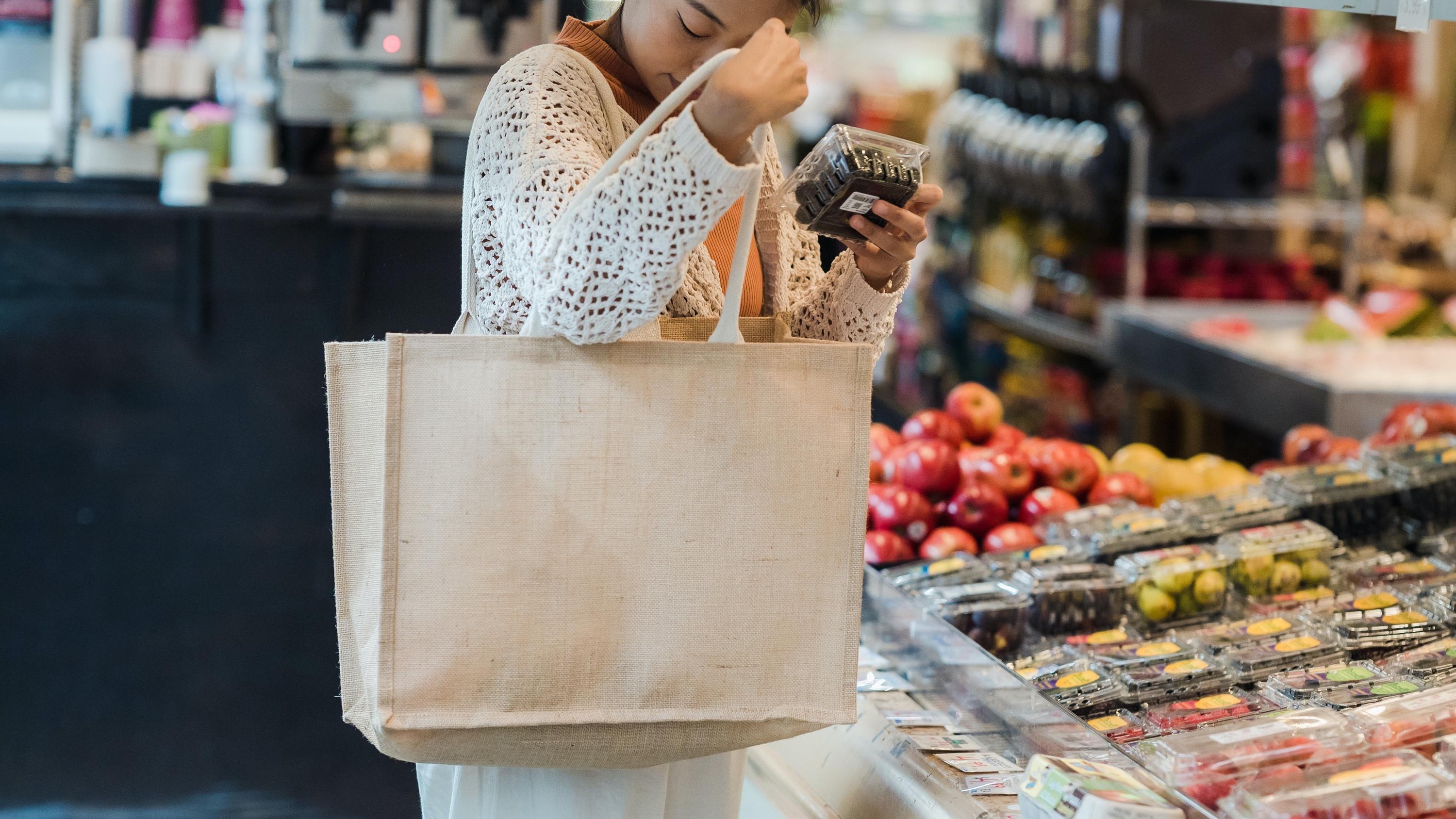
Our Trip to GroceryShop (Conference)


The Rightpoint Commerce team attended the recent GroceryShop conference in Las Vegas, a conference focused on retailers and CPG brands. The insights shared offered up useful information about the pivotal role of digital in enhancing omnichannel and loyalty, here are some of our key learnings.
Industry Trends
Retail Media is a big deal: The role of the grocery store or retail location is rapidly evolving beyond just a point of purchase (POP), retail media (marketing to customers at POP or choice - often in-store but also while shopping online) is an additional revenue stream for retailers and a welcome opportunity for brands to educate and persuade shoppers at the most critical point in their journey.
Seamless Omnichannel Experiences: Leading retailers are prioritizing seamless omnichannel strategies, with significant investments in this area. For example, Sam's Club highlighted that digitally engaged customers spend three times more than those who aren’t but have online accounts. The emphasis is on utilizing apps and digital platforms to enhance in-store shopping and create strong connections between digital and physical experiences—a key focus for industry giants like Instacart, Amazon Fresh, Ahold Delhaize, and Sam's Club.
Personalization everywhere: Most speakers discussed some form of personalization, retailers and brands alike agree that shoppers expect and value relevant (i.e. personalized) messaging and product. Dynamic pricing was another hot topic – unlocked by growing adoption of digital shelf tags – allows stores to rapidly respond to competitive pressures and market changes as well as refocus operations work to serve the customer.
Growth of Private label: Private label products continue to grow and are a powerful tool for retailers to respond to customer product feedback. It incentivizes brands to continue to innovate with their products and experiment with package sizes in addition to better margins.
Computer Vision and Robots: There are many expanding use cases for computer vision throughout the store operations from shrinkage detection in self-checkout, to in-store inventory tracking, to promotions and rewards (Ibotta).
Digital Trends
Native App performs better than web: Engagement and conversion is higher in App vs Web (34% vs 30%). This is generally known but always helpful to find reinforcement and recency.
Omnichannel journey is a priority: Retailers are seeing immense growth in omnichannel investments and are focused on investments that ensure the journey is seamless (Ahold Delhaize, Kroger, Instacart, Amazon Fresh),
Loyalty is king: Loyalty is an unlock to better personalization and value, foundational shopper priorities and priority across all retailers.
Context Matters: Online shopper context and state of mind is different from in-store context, online shopping tends to be focused with minimal product discovery whereas in-store customers are far more open to suggestions and discovery.
Online and In-Store offer different value: Online and in-store have different values, Online / digital can serve the following use cases better than in-store, but retailers should carefully explore optimal journeys and shopping contexts and optimize for those.
Building grocery carts is work: The initial cart build can be time consuming, personalization and knowing prior orders and desires will be valuable for ‘building an initial cart’ and then refining from there.
Natural Language and how we search: Instacart's CEO envisions a world where we move beyond ingredient keyword search and adopt a goal oriented natural language search instead. e.g. ‘I need a Salmon dinner for 4 without Gluten’, ‘Get Superbowl party supplies for 16 people’.
Interesting Product Developments
The ‘Caper Cart‘ from Instacart uses vision to detect the products you’re adding to the cart and supports instant checkout without needing to scan and ring you up at the end of the shopping journey, in addition to scanning it can present coupons on items being added, recommend additional products, provide information about the products, serve as another retail media revenue stream for merchants, provide a thorough accounting of the cart balance (so there are no surprises later in checkout).
Dynamic price tags or ‘digital shelf tags’ are growing and present many opportunities to better serve customers, a good use case provided by Ahold Delhaize CEO Frans Muller, was the ability to reduce the price on product that was nearing expiration which helped avoid waste but also helped reduce costs for customers. While a potential force for good, allowing stores to refocus workers from physically updating prices of 10-40K SKUs across stores it could also usher in an era of ‘surge’ pricing. Interestingly some of the digital shelf tags are equipped with NFC which offers a means for shoppers to interact with the tag to retrieve nutrition or additional product information.
Visual Processing and detection featured heavily with a variety of store operations and checkout capabilities including tools to monitor for self-checkout shrinkage and shelf monitoring systems that cruise the store and track and record inventory.
Highlights from Industry Leadership
Frans Muller, Ahold Delhaize
Frans described a couple of initiatives that the 100-year-old company is working on as part of the ‘four-year transformation’ they have embarked on. The transformation is the outcome from customer research across generations and despite shopper top priorities largely unchanged across generations (value, and quality) there are some interesting new shopper priorities that have emerged:
Seamless and hassle-free journeys
Product source (sustainably and responsibly sourced)
Convenience
For Ahold Delhaize online sales account for a little over 8% and there is consensus that online has not grown as much as expected but is an important compliment to the in-store experience with various retailers sharing evidence that digitally engaged customers do in fact significantly out-spend customers that are not digitally engaged (despite shoppers continuing to do most of their grocery shopping in physical stores). Post pandemic, the delivery methods for online orders moved from 90% home delivery to 60% click & connect - further evidence that omnichannel merchants and retailers need to carefully consider the whole purchasing journey and ensure that path is seamless.
Personalization is an area Ahold are building on, loyalty plays a large role in understanding customers and helping to bring them relevant product and services. Some of the areas gaining traction through personalization include:
A Bonus Box promotion that emailed loyalty program customers 5-10 personalized offers every week contributed to an increase of almost 9% in spend.
Scan and cook capabilities that recommend recipes and complimentary products based on the items in a customer’s refrigerator.
Dynamic Pricing is helping provide better deals to customers. One example was pricing reductions based on shelf life that both helps avoid food waste but also affordability.
Ahold’s priority for the coming years was framed as:
Omnichannel continues to be a big driver for growth and differentiator of the Ahold companies.
Physical Stores are still relevant and in-store engagement is higher than pre-pandemic engagement, online has never really cannibalized in-store sales but is complimentary.
Ahold continues to invest in people and recognize their importance.
Ram Krishnad, PepsiCo
Many themes started to emerge in the interview with Ram that continued to present throughout the conference:
Personalization
Omnichannel experience
Loyalty
Ram shared some of the interesting retail insights and forecasts to come out of the PepsiCo research groups, specifically noting 3 key strategies emerging for growth in retail:
Autonomous Convenience: Retailers will need to rely on leading-edge technology such as advanced analytics, generative AI, and automated delivery to proactively deliver on shoppers' needs.
Precision Loyalty: Retailers will need to leverage information about their customers to better understand their needs, habits, and preferences to deliver more relevant experiences and products to their customers
Anticipatory assortment: Retailers and brands will need to anticipate demand and have the right products, at the right time across the right stores and fulfillment methods.
The PepsiCo research is outlined here.
Chris Nicholas – Sam’s Club
The interview with Sam's Club CEO Chris Nicholas presented many similar themes, digitally engaged customers buy more and personalization is an important pathway to building better experiences.
Chris spoke of store operations drones capturing images of the store daily to build a next-best task list for the store operations team, moving their focus from tedious stock and inventory work to more impactful tasks like serving the customer directly.
Sam’s Club - Grapevine
Sam’s Club has gone a long way to integrate the in-store and digital app experience with users scanning and paying in app while shopping the store, the Sam’s Club exit arches use computer vision to reconcile the items in your cart with the purchases in the app helping you move through the store quickly and efficiently.
The app also allows Sam’s Club to collect far more intelligence about where the customer is in the buying journey unlocking unique insights about their shoppers purchase path.
Evolving Wholesale Club Expectations
Chris spoke about the perception of the traditional wholesale club model evolving, technology is helping to peel away the acceptance that clubs tend to require more friction in the journey (e.g. picking products out of pallets), in addition there is a growing number of Gen Z / Millennial registrations (25% last quarter) - a demographic challenged with storage for large format who are increasingly using Sam’s Club as a top up shop (Diapers, Mac & Cheese, Lasagna).
Fidgi Simo, CEO, Instacart
Fidgi spoke about Instacart’s journey to ‘create a world where everyone has access to the food they love and more time to enjoy it together.’
Digital and the impact on cost conscious shoppers
The digital channel in general has been impactful for Instacart’s shoppers from an affordability point of view.
Accepting Snap / EBT payments online helps avoid the stigma associated with using food stamps in a public setting.
Digital shopping carts help users carefully manage costs and avoid surprises.
Generative AI and the future of how we discover and find product
Fidgi raised an interesting question of how we discover and find product, as a consumer base we are trained to find our groceries by keyword e.g. ‘Eggs’, ‘Cheddar Cheese’ but felt that consumers would need to be retrained to search through natural language and move away from ingredient-based search to building carts based on goals:
Get me some Superbowl snacks for 10 people with Gluten free options
Add a healthy salmon dinner for 4 with asparagus
GroceryShop highlighted key trends shaping the future of grocery retail, from the rise of retail media and seamless omnichannel experiences to the growing importance of personalization. Brands and retailers are leveraging technology like dynamic pricing, computer vision, and native apps to create more tailored, efficient, and engaging shopping journeys. As digital continues to drive innovation, businesses must remain agile in adopting new tools and strategies to meet evolving consumer expectations and drive growth.


